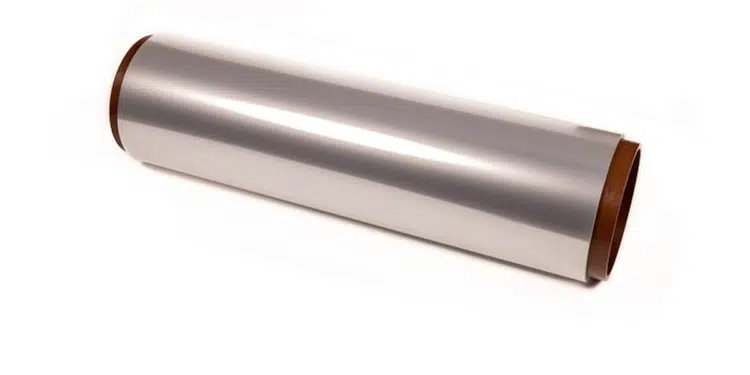SABIC, a global leader in the chemical industry, introduced its new 5-micron ELCRES™ HTV150 dielectric film for high-temperature, high-voltage, professional-grade capacitor applications, such as traction inverters for hybrid, plug-in hybrid and battery electric vehicles (xEV).
This new film, featuring high-heat performance up to 150°C, surpasses the temperature and voltage capabilities of incumbent products. ELCRES HTV150 film can help support the transition from conventional semiconductors based on silicon (Si) to next-generation, wide-band-gap technologies based on silicon carbide (SiC), improving the efficiency of inverter modules.
“Multiple industries, from wind and solar to aerospace and automotive, are looking to adopt high-efficiency, low-loss silicon-carbide semiconductors for inverter modules,” said Scott Fisher, business director, ULTEMTM products and Additives, SABIC. “Until now, this goal has been hampered by capacitors using lower-temperature films that often fail in high-heat applications without active cooling. Our new ELCRES dielectric film allows customers to leverage silicon carbide’s increased power capability while operating at temperatures up to 150°C. This innovative film can support significantly improved inverter module operation to help drive higher performance in xEV and other demanding applications.”
Unique Capacitor Solution
New ELCRES HTV150 dielectric film can support the design of high-voltage, high-temperature DC link power capacitors that can store large amounts of electrical energy for long periods without significant leakage of current or loss of charge. This technology offers potential advantages for capacitor applications, including excellent dielectric and insulative properties, as well as low loss at the high frequencies and high temperatures at which wide-band-gap semiconductors operate.
The new ELCRES HTV150 film offers high reliability that is critical for next-generation xEV. Based on internal testing, the film demonstrated a lifespan of 2,000 hours at 500V and 150°C. Furthermore, it is self-healing in the event of a breakdown caused by excessive voltage. This combination of high voltage stability at high temperatures, low dielectric loss at high frequency and ability to self-heal to avoid catastrophic failure differentiates ELCRES™ HTV150 film from traditional capacitor films.
With an operating temperature range of -40°C to 150°C and high voltage performance, ELCRES HTV150 dielectric film is an excellent candidate for demanding applications, such as power capacitors for the latest EV traction inverters and onboard chargers. The film can also be used for power capacitors in mass transportation, renewable energy, aerospace and motor drives and controls.
SABIC’s ELCRES HTV150 dielectric film can be used in industry-standard metallization, capacitor winding and flattening processes. It has been validated on existing equipment and with various metallized electrodes, including flat and tapered metallized designs as well as patterned electrodes.
Collaboration with Leader in Ultra-thin Film
SABIC is currently collaborating with Shin-Etsu Polymer Co., Ltd., a leading Japanese company that specializes in ultra-thin film extrusion, to produce ELCRES HTV150 film.
“Our longstanding and successful collaboration with SABIC has entered a new phase with ELCRES HTV150 dielectric film,” said Yoshiaki Ono, president, Shin-Etsu Polymer. “Combining SABIC’s innovation in high-heat materials and our expertise in ultra-thin film extrusion, our joint effort will deliver a long sought-after solution for industries seeking high-performance, high-voltage capacitor technology.”
“Our deep expertise in material science, combined with our commitment to understand global megatrends and downstream customer requirements and develop associated capabilities such as electrical testing, has enabled us to deliver this unique solution to the industry,” said Greg Stoddard, technical director, Resins and New Chemistries, SABIC.
With this latest addition to its growing dielectric film portfolio, which includes UTF120 film in four gauges, SABIC is demonstrating its continued commitment to deliver innovative material and film technologies to power electronics to address increasingly stringent customer and industry requirements. SABIC will continue to develop thinner-gauge film to meet requirements for different voltages and higher energy density.






























